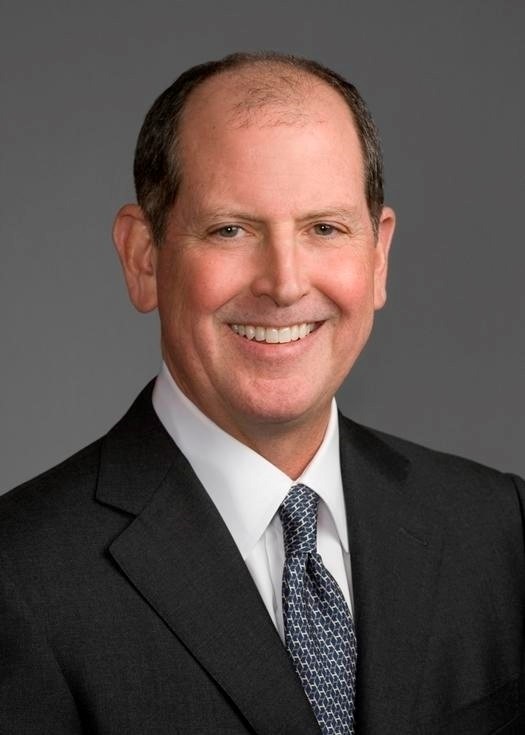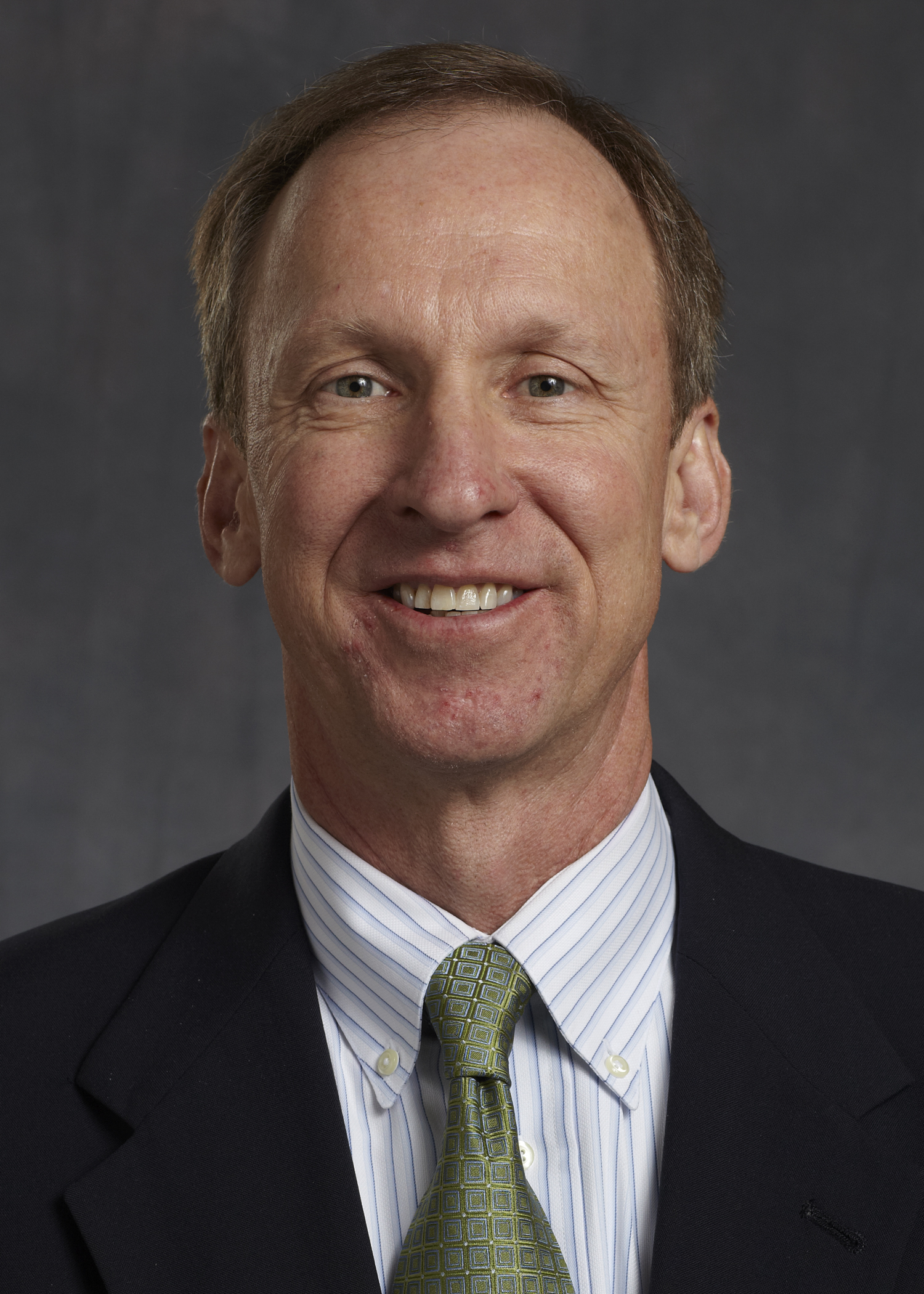[Editor's note: A version of this story appears in the November 2020 issue of Oil and Gas Investor magazine. Subscribe to the magazine here.]
If you could sit down over a cup of coffee with some industry veterans who have lived through more than one boom and bust cycle, what would you ask them? What did they see, and what did they do to cope? They lived through the devastating 1980s, when the natural gas bubble that torpedoed prices lasted so long that people began to call it the gas sausage.
They remember when houses and office space in Midland and Houston became empty shells, sad reminders of the boom that had swept through the oil patch in the late 1970s. People joked that you could store hay in those buildings. Drilling rigs and other assets of all types were sold for 10 cents on the dollar.

—T. Frank Murphy, managing director, Janney Montgomery Scott
What lessons can we learn from those days? Is now the best time to wait and see and preserve capital? Or should a company tear up the playbook and revamp everything: job titles, the organization chart, the strategy, the asset base, the end game?
“This is not our first rodeo, but I sure hope it’s the last one like this,” said Paul Zecchi, CEO, Central Resources LLC, in Denver. “My main advice is, ‘Any old port in a storm.’ Sometimes that port is not the one you wanted, but you’ll take it. Don’t be too picky because I think we’re in for a slog. Those business models that say, ‘I need to be a certain size’ need to be put on the back burner for now.
“And I think you have to think out of the box and move on to new thinking or a new frontier, at least for a while.” To that end he has been busy trying to buy and sell a few assets in an admittedly tough market. He favors long-term assets that keep producing; he is not drilling any wells at this time.
We spoke with several other executives and financiers who lived through the historic busts of the 1980s, 1990s and early 2000s, and all the subsequent recoveries. Here, we share some of their advice on what companies did right and what they did wrong, how they kept afloat during the downcycles, and, just as important, how they rode the recovery wave on the other side.
Many of them agreed that cash is king, debt is deadly and focus is required. Several questioned the economic viability of the shales and what that implies for the recovery to come. “Production went up, but making money did not,” said one source. “It was such a craze to get into this shale and be king of the hill.”
Many think opportunities are opening up now, especially for investment in distressed asset classes. Others noted that international investors seem to be getting interested again: after all, they’re looking at zero interest rates in their home countries. “At some point, they’ll realize there is a real value play unfolding here,” said Tim Murray, a former energy financier for Wells Fargo, Guggenheim and other groups.

—Tim Murray, founder,
Active Iron Energy
His family company, Active Iron Energy, is looking to raise a fund to buy conventional assets that were overlooked during the shale boom, a thesis several other investors are pursuing.
Meanwhile, coping and recovering is the main event in the arena. For an E&P team working to survive another round, or an investor who has just been bucked into the dirt, “It’s difficult to double down when the dealer just raked half your chips off the table,” said Murray, also a managing partner of Bayou City Capital Advisors, his new firm that is advising some E&Ps at the moment. He noted that in some good companies that have not been in this much distress before, management doesn’t seem to know the language it should be using to work through the situation.
“There is no magic pill in this industry that can change the entire complexion of your business,” he said. “It’s just the basics: Reduce costs and overhead, negotiate better supply agreements with your vendors, be prudent. Only do things that produce cash—and make sure everything you do is underpinned by today’s price, not betting on tomorrow’s price.”
Here’s a summary of what some other veterans shared with Investor as they recalled old challenges and pondered new opportunities.
Capital access is not a given
Armed with a degree in economics, T. Frank Murphy entered the industry in 1978, working for several E&P companies and investment bankers. Today he is a managing director and co-head of oil and gas investment banking for Janney Montgomery Scott LLC, and he is a board member on the Energy Infrastructure Council (formerly the MLPA).
At one time Murphy became assistant to the CEO and vice president of finance for American Exploration Co., one of the largest sponsors of public and institutional income partnerships during the 1980s, which were meant to acquire and exploit producing assets. That business model went by the boards as tax laws changed, so Murphy is no stranger to industry difficulties.
“When prices collapsed in the ’80s, you had been dependent on those public partnerships and the tax write-offs—well, too much money flowed to the industry, and a lot of bad wells were drilled. That’s also what happened during the shale boom,” Murphy said.
“You can’t rely on raising capital as part of your business model. When the music stopped in the ’80s and investors went away, the companies that depended on raising capital were no longer viable. It’s the same thing today. There are too many companies, both upstream and midstream, that were hurt when capital markets dropped in 2014—they kept outspending their cash flow on the theory that they could always raise money in the debt and equity markets.
“You can’t ignore the laws of economics in the pursuit of growth for yourself.”
Many companies entered this period they’re in now with too much leverage, and they can’t keep their heads above water. “You’ve got to manage your balance sheet in ways that allow you to withstand conditions when the equity markets are closed,” Murphy advised. “The problems besetting companies today are largely because they can’t access capital anymore. It’s a real parallel to what we saw happening in the ’80s.”

—Bill Finnegan, partner, Latham & Watkins LLP
Egos block mergers
Many companies that should merge will not be deemed attractive merger candidates until they clean up their balance sheet. First, a wave of bankruptcies and deals with bondholders will probably be a multiyear process, observers said. The pending merger between Southwestern Energy Co. and Montage Resources Corp. could be the tip of the iceberg. [Editor’s note: This transaction closed Nov. 13.]
But putting two underperformers together doesn’t necessarily solve anything, noted Bill Finnegan, partner with Latham & Watkins LLP. “You really have to work with your financial adviser and get your cost structure in place. Once you become the most efficient operator, you have to be careful about the deals you do; they have to make sense. Just getting bigger probably won’t accomplish what you wanted to do—what is your real strategic goal?”
One of the biggest hurdles to a merger that does makes sense is management’s unwillingness to accept the new reality. Big egos run big companies—and hate to let go.
Letting go is tough also because valuations have tumbled. “If you thought your assets were worth $100 million, well, now they might be worth only $60 million, so it might not be helpful to sell now, if your debt is too high,” said Murphy. “Sometimes people will sell their best assets to survive, but that leaves them with poor assets.”
—Jim Trimble, founder,
retired E&P executive
“There are a lot of managers who don’t want to let go. These social or cultural aspects are really tough to work through.”
Still, as one source noted, this industry is full of tough people who can handle the pressure even as they suffer emotionally from being forced to lay off staff and they lament selling prized assets.
“I’m a real proponent that this industry is going to survive and continue to be a major component of the U.S. economy,” said Jim Trimble. The veteran E&P executive has mostly retired after heading up several companies where he was called in by the board to serve as interim CEO during restructuring and before a sale. These included Stone Energy Co. and PDC Energy Inc. At one company, he had to whittle 22 vice presidents down to five or six, but he hated it—it was dealing with real people’s lives.
“But you’ve got to change your thinking and be willing to take a chance.”
Back to basics
Thinking creatively can allow for these changes, but a few basics remain beyond question. Many sources lament that the E&P industry wandered away from the basics as the shale boom unfolded, and they advised that both companies and investors need to look anew at traditional rules. “We need to get back to this: ‘If I give you a dollar, what will you give me back?’ In the last 10 or 12 years, too many people focused on the number of acres they have, dollars per acre, wells per acre, the number of undrilled locations. That isn’t the way we used to evaluate a company,” said Murray.
“It used to be, ‘What is your cash flow, what is your return on capital, what is the investor return?’ All that went out the window during the shale boom with these spreadsheet jockeys on Wall Street. Don’t talk to me about what price you paid per acre.”
Murray said he thinks we’ll see new opportunities for cooperation where operators, mineral investors and the service companies work together to get things drilled and share in the proceeds. The industry has always been imaginative as far as deals and how things get done.
However, regardless of business strategy or new partnerships, a competitive asset is needed to survive any downturn. That means low cost of development and operation, said one source who has worked for six E&Ps over a long career. “The old saying is true: The low-cost operator survives, aka survival of the fittest,” he said. “It does not necessarily take scale to have low costs. Employ only the most essential people and outsource what you can. Low G&A per barrel keeps your company from being trash-compacted into another more efficient company.”
—Matt Silverman, head of exploration,
Robert L. Bayless Producer LLC
Unravel the knots
Matt Silverman, a former president of the Rocky Mountain Association of Geologists and current president of the Petroleum History Institute, has seen a lot in a career of more than 40 years. Silverman said he was stunned when, earlier this summer, not a single rig was working in Wyoming.
The widely published geologist, based in Boulder, Colo., has worked for Total, Texas Gas Exploration and consulting firm Gustavson Associates. For the past 20 years he has been a special project manager, and recently the full-time head of exploration, for Robert L. Bayless Producer LLC, a family firm since 1958.
He advises not to throw in the towel completely during a downturn, as that might affect how a company succeeds once it comes out the other side.
“What happens when companies get in trouble is their projects go cheap or get stopped, or companies get sold, but people who are farsighted can take advantage of these opportunities. It’s a valuable lesson for companies of all sizes,” he said.
“One thing companies can do right during a downturn is look at those as an acquisition or a turnaround opportunity. You never want to look away from something that is messy. You have an opportunity to unravel the knot. This is true for individual projects or entire companies.”
He said the Bayless company has been able to move into new areas throughout the Rockies because someone else needed to move out, or was in trouble elsewhere in another play, and needed to sell a good project. The company has adapted to downturns in that way.

—Jay Chernosky, principal, Travis Energy Partners
Mistakes to avoid
As E&Ps try to surmount the challenges of this downturn and return to better times, bad choices will be made. Zecchi said people can get caught up in the minutia of what they should make in a situation, instead of accepting what they can make.
“What’s done is done. I say that your first loss is your best loss. Sometimes you’re going to take it on the chin and so you might as well do it early and then move on. If you have to do something, move on it quickly, and then don’t look back. Look to what you’ll do in the future, not what you did in the past.”
Trimble agreed, saying one mistake made often during a restructuring is that executives try to salvage a company and keep it the way it was before it got into trouble rather than look at what it should become. If new owners are financial people, not oil and gas people, they try to run the company post-bankruptcy with the same old management in place, yet they expect a different outcome. “I just don’t see that happening,” he said. “You’ve got to have a board willing to make hard choices. It can’t be business as usual.”
Investors used to invest in E&P growth at any cost, but those days appear to be over, so Trimble favors a flat organization that’s good for the long haul—it’s a new world of changed expectations, new alliances and global oil demand turning down compared to the macros seen in prior oilfield downturns.
“A company has to respond differently than it did in the past. You have to be patient now and realize that growth is not the answer. You’ve got to run an organization that’s more sensitive to regulatory issues and ESG.”
The days of outspending cash flow should be over, said Jay Chernosky, a veteran of 36 years in energy banking. Semi-retired since last year, he runs Travis Energy Partners, his private investment vehicle, and serves on the boards of Colt Midstream and Jack Hightower’s High Peak Energy.
He started his banking career in 1983 during a historic and prolonged downturn: His first assignments were workouts and restructurings. Oil had plunged to $8/bbl by 1986.
Like most oil folk, he remains optimistic today, yet he acknowledges the risky nature of the industry. “Look, oil and gas has always been volatile, and I think that will increase, not decrease. So, you’ve got to be prudent. E&P companies are well known for overspending when times are good, so you’ve got to be vigilant and be a low-cost producer.”

—Michael Dillard, partner, Latham & Watkins LLP
Naturally, geologist Silverman thinks a key mistake companies make is slashing their exploration staff completely. Companies should keep some projects in the pipeline and keep some inventory, from concept to acreage to maturity, he said. “You’ll be glad you have these when prices turn around, which they always do. If you don’t have good ideas in inventory, you’ll be behind the eight ball,” he said.
A common and all too human mistake during a downturn is denial, sources said, which delays responding to the crisis. “The biggest problem of companies on the financial precipice is denial by the management team or the board. Executives who face facts and fully embrace the situation and get on with it fare the best,” said Michael Dillard, who joined Latham & Watkins to open its energy office in Houston. Dillard has been an energy lawyer for some time and was formerly the head of the energy practice at Akin Gump Strauss Hauer & Feld LLP. During his career he’s been involved in half a dozen large bankruptcies and advised on numerous restructurings or “liability management” such as debt exchanges.
“I can’t think of a situation where a company was about to go into bankruptcy and something happened to increase the price of oil and save them. It’s a possibility, but it’s so remote,” he said. “People should not say, ‘If we can just hang on for six months or another year.’ Hope is not a strategy, because then you’re riding the wave down, and every day that goes by, the company has less value.
“Be realistic. Don’t be in denial. Address the issues as early as possible—don’t wait.”
He labels the current situation as “Back to the Future,” as it resembles what he saw in the 1980s bust, but the difference is then, private equity was not nearly as much of a force as it is today and most independents operated their assets and could justify buying something on the basics, not the goal of a quick flip. “They looked at cash flow and how quickly an acquisition could reach cash flow or payout. They built up their companies one brick at a time,” he said.
In contrast, as many sources noted, in the past few years, shale companies were valued not on cash flow or returns but on tantalizing possibilities—many well sites in inventory and implied future drilling activity—even as they burned through capital and field development was a long way off. Additionally, some E&Ps are in the “wrong” basin or play and facing higher costs and less access to capital as a result, they said.

—Paul Zecchi, CEO, Central Resources LLC
Trimble noted that many E&Ps are spread too thin, working in too many basins or plays, with staff trying to do too much. He thinks longer term, more assets will migrate to the bigger companies and mom and pop independents will have to plug their small wells.
But he admits consolidation is a tough game, with two boards that don’t want to yield.
“Now, companies are being valued on positive cash flow, not the number of drilling sites they have, and I think CEOs are well aware of this,” Dillard noted. Bankers are very tired right now as they work through dealing with multiple distressed clients and bankruptcy situations, he added. “The fulcrum security used to be high-yield debt, but lately, it’s the first-lien holders (usually banks) that hold the most sway.”
The new world
Despite all the problems companies now face, most will survive, and one reason is that its executives remain in love with the industry. “It’s wrong to build expectations for the future based on what’s happening today. That’s not sustainable. But I do still love this business, and absolutely I would choose it again,” said Zecchi.
The veterans we talked to remain convinced hydrocarbons must play a role in the future, despite the Great Energy Transition underway or the Green New Deal some foresee. “Make no mistake, the industry will recover,” said Chernosky. “There’s no replacement for hydrocarbon fuels—even electricity for EVs has to be made from natural gas or coal. We will make an energy transition... but it’s going to take some time, and it’s going to need natural gas.”
For now and in the future, companies must manage what they can, hope to get lucky, and remain low-cost producers, said Curt Taylor, partner with Saddlebrook Ventures LLC, who has more than 30 years in oil and gas, including stints at Ralph E. Davis and Associates and 14 years in private equity at EIG Global Energy Partners. “You can’t predict black swan events,” he said.
“I think size matters. The next years belong to the larger companies (consolidation) that are converting inventory and managing it to survive. Woe to those who ended up the last man holding the bag on high-cost assets.”
Recommended Reading
Range Resources Holds Production Steady in 1Q 2024
2024-04-24 - NGLs are providing a boost for Range Resources as the company waits for natural gas demand to rebound.
Hess Midstream Increases Class A Distribution
2024-04-24 - Hess Midstream has increased its quarterly distribution per Class A share by approximately 45% since the first quarter of 2021.
Baker Hughes Awarded Saudi Pipeline Technology Contract
2024-04-23 - Baker Hughes will supply centrifugal compressors for Saudi Arabia’s new pipeline system, which aims to increase gas distribution across the kingdom and reduce carbon emissions
PrairieSky Adds $6.4MM in Mannville Royalty Interests, Reduces Debt
2024-04-23 - PrairieSky Royalty said the acquisition was funded with excess earnings from the CA$83 million (US$60.75 million) generated from operations.
Equitrans Midstream Announces Quarterly Dividends
2024-04-23 - Equitrans' dividends will be paid on May 15 to all applicable ETRN shareholders of record at the close of business on May 7.





